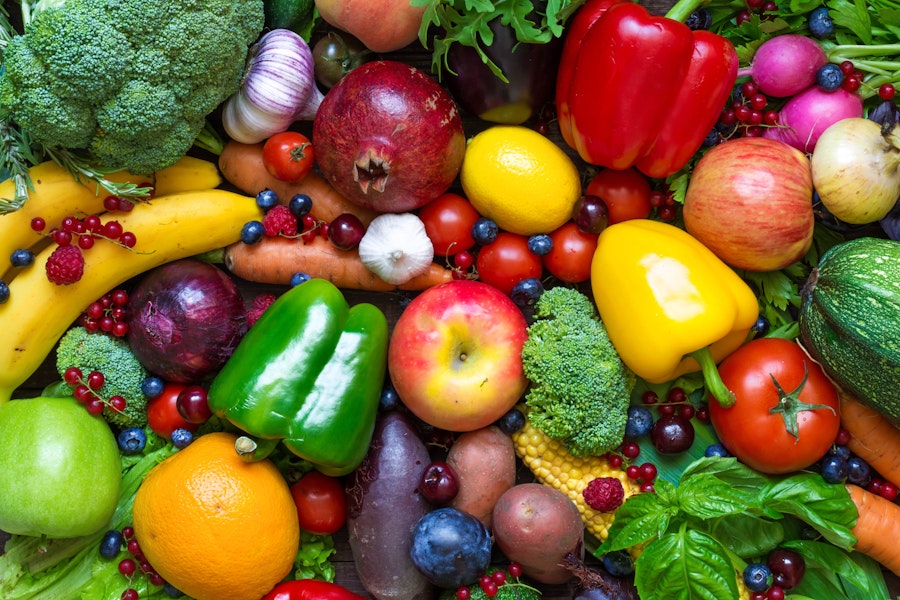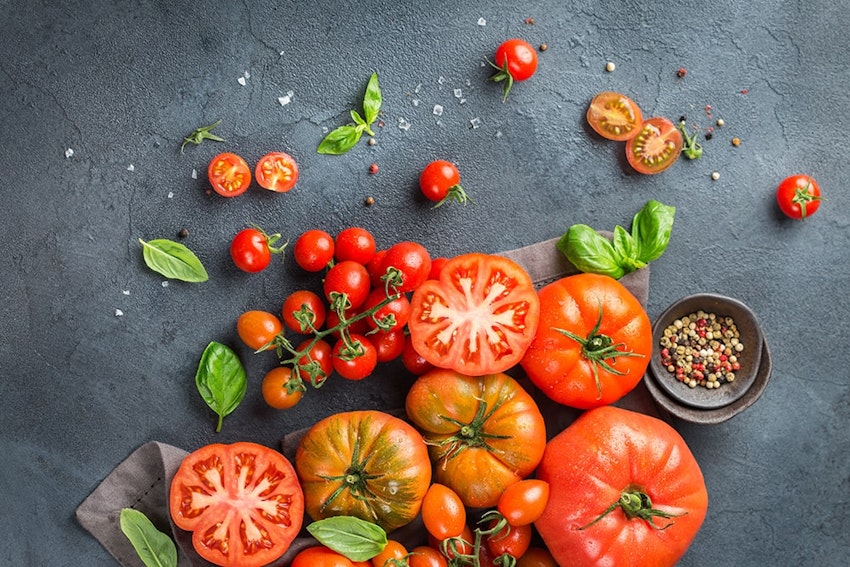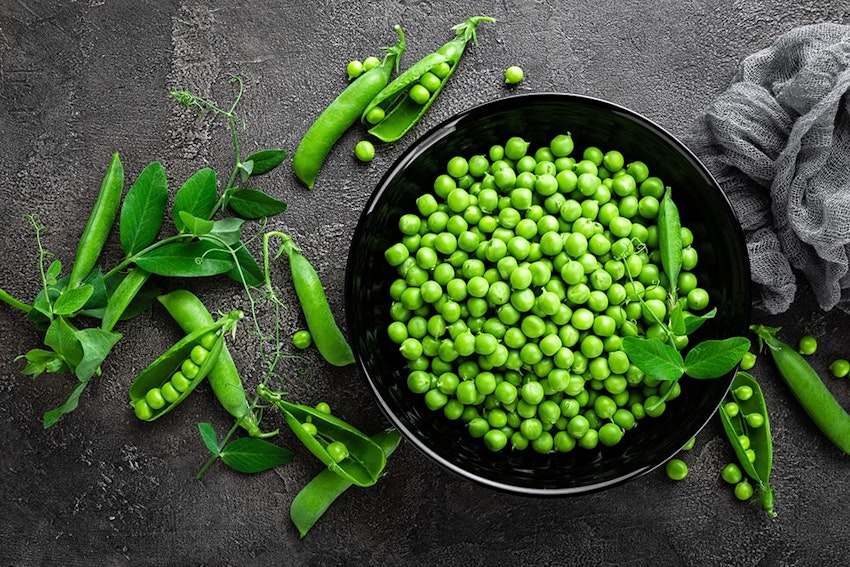All About New Common Allergens

Not only are food allergies more common than ever*, but multiple food allergies are also too. That in turn likely means even more allergens in the mix, so we decided to take a closer look at some of the upcoming allergens that should be on your radar…
What are the 14 Allergens?
Currently, there are 14 recognised Major Food Allergens. These are Celery, Cereals containing Gluten, Crustaceans, Eggs, Fish, Lupin, Milk, Molluscs, Mustard, Nuts (Tree Nuts), Peanuts, Sesame, Soya and Sulphites (Sulphur Dioxide).
Who decides what the main allergens are in the UK?
The short answer – the FSA (Food Standards Association). The long answer is that the 14 Major Food Allergens label came from 2014 EU legislation – the Food Information Regulations act – that dictates if a food product ‘Contains’ or ‘May Contain’ one or more of the 14 allergens it must clearly (e.g in bold type) be referred to on the product’s label and/or packaging.
What are the other most common allergies?
Many people suffer from allergies outside the 14 major allergens, and some are becoming increasingly common.
Some prominent examples of this include:

Kiwi
According to the British charity Anaphylaxis Campaign, Kiwi is an allergen potentially more common than some of those within the 14 Major Food Allergens. Symptoms can vary from mild (a prickly or tingling feeling in the mouth and/or throat, and a rash where skin has come into contact with the fruit) to severe (nausea, vomiting, diarrhea, abdominal pain, difficulty breathing and a loss of consciousness).
Children may be at higher risk of suffering from a kiwi allergy, which can also be a cause of oral allergy syndrome.
People who suffer from a kiwi allergy should be aware they might also be allergic to birch pollen and/or latex, though it is possible to be allergic to one on its own.

Banana
Reactions to a banana allergy usually come immediately after eating or coming into contact with the fruit, and can vary widely. An itchy rash is a common symptom, as is a general itching of the throat and mouth, and swellings of the skin. In extreme cases, sufferers may experience a narrowing of the throat.
Like kiwi, people allergic to bananas often find they are allergic to latex – this is because the proteins in rubber trees that cause latex allergies are similar proteins found in banana trees.

Lentils
Lentils are a legume, a family that also includes chickpeas and other types of bean. Peanuts are also a legume, but not everyone with a peanut allergy is allergic to lentils, chickpeas and beans. Hives and other skin reactions are the most common indicators of a legume allergy, but severe cases can result in anaphylaxis.

Tomatoes
Tomatoes share similar allergy-provoking proteins to those in birch pollen, though many people who cannot tolerate the offending protein in raw tomatoes find they can eat cooked tomatoes without issue.
Those who suffer from a tomato allergy should also be wary of potatoes, peppers and aubergines, and will find their likely symptoms include a tingling in the lips and/or mouth and an itchy red rash.

Peas
Peas are also a legume and people with allergies to lentils, chickpeas, soya and peanuts, might find there is a cross-sensitivity – though some might find only cooked peas trigger a reaction. Peas are especially worth mentioning on their own because of the recent rise in the use of pea protein in packaged food products. Because pea protein is dairy and lactose-free, it is a common ingredient in vegan alternatives to meat, eggs, milk and cheese.
There has also been an increased use of pea flour from Manufactures within their products, and these recipe reformulations highlight the need to check product labels.
Symptoms of a pea allergy include a rash on the skin, runny nose, diarrhea, nausea, and difficulty breathing.

Strawberries
The most common indicator of a strawberry allergy is a flat red rash around the mouth, and sufferers may also experience hives, itchy skin, dizziness, an inflamed throat and mouth, coughing, wheezing, diarrhea, and vomiting. Someone with a strawberry allergy and eczema might find their eczema aggravated after an allergic reaction. Strawberries have been known to cause anaphylaxis, though it is rare.
The proteins that make birch pollen an allergen are similar to those that prompt an allergic reaction in strawberries, so those with a strawberry allergy might find they are also sensitive to birch pollen and vice versa.

Onions and Garlic
Though it is possible to be allergic only to onion or to garlic, there is a strong cross-reactivity between the 2 foods (others in the family include leek, asparagus and chives).
Anaphylaxis from onions or garlic is believed to be very rare – most sufferers might experience hives, a skin rash, a tingling sensation in the mouth and throat or a swelling of the lips, throat and face.
Sometimes people mistake an onion or garlic intolerance for an allergy because onions contain fructans – which are not absorbed very well by the small intestine and can be painful to digest. This can lead to bloating, trapped gas and diarrhea. People who do have this sensitivity might find that they can eat cooked onion (when the protein denatures) and not experience any problems whatsoever.

Citrus Fruits
Allergies to citrus fruits – including lemons, limes, oranges, pineapples and melons – are rare, and typically signified by mouth ulcers and/or a rash. Some sufferers find that peeling the skin off the fruit significantly improves their tolerance.
What foods are they found in?
Kiwi
Kiwis can be found in:
- Smoothies
- Fruit salads
- Prepackaged frozen fruit selections
- Sorbet
- Gelato
- Ice cream
- Kiwi lime pie and other fruit-based desserts
Banana
Bananas can be found in:
- Banana bread
- Banoffee pie
- Banana cake
- Banana Split
- Banana flour
- Some fruit-based cakes and desserts
- Smoothies
- Fruit salads
- As a topping on porridge and other breakfasts
Lentils
Lentils and other legumes can be found in:
- Dahl, or dal, and other curries
- Asian dishes
- Hummus
- Baked beans
- Falafel
- Worcestershire sauce
- BBQ sauce
- Chilli
- Mexican dishes
- Many vegan and vegetarian dishes
Tomatoes
Tomatoes can be found in:
- Salad
- Base Sauces including ragu and passata
- Lasagne and other pasta dishes
- Casseroles
- Bloody Marys
- Guacamole
- Salsa
- Soup
- Ketchup
- Curry
- Bruschetta
Peas
Peas can be found in:
- Risottos
- Salads
- Soup
Pea protein can be found in:
- Vegan cheeses
- Vegan yoghurt
- Meat-free burgers
- Meat-free sausages
- Savoury snacks
- Protein Powder
- Dairy-free ice cream
- Dairy-free mayonnaise and other sauces
Strawberries
Strawberries can be found in :
- Desserts including strawberry shortcake, Eton Mess, Cheesecake and Pavlova
- Fruit salad
- Fruit bars
- Smoothies
- Milkshakes
- Ice cream
- Cookies and biscuits
- Fruit Beer
- Cocktails
- Fruit juice
- Salads
Onion and garlic
Onions and garlic can be found in:
- A huge amount of restaurant dishes
- The base of most sauces
- Soup
- Casseroles and stews
- Risotto
- Gravy
- Sausages
- Flavouring on snacks and crisps
- Dips
- Pies
- Curries
Citrus Fruits
Citrus fruits such as lemon, lime, pineapple, orange and melon can be found in:
- Lemonade
- Juices
- Fruit Salads
- Cold drinks
- Fruit-based desserts
- Sorbets
- Ice cream
- Cocktails
- Liqueurs
- Ice lollies
- Duck a l’orange
- Lemon Chicken
- Hawaiian Pizza
- Salsa
- Guacamole
- North African dishes
Will these be made part of the official Major Allergens?
With allergies overwhelmingly on the rise* there are calls from some in the allergy community to expand the number of ‘Major Food Allergens’ so that the same packaging laws that apply to the likes of Milk and Celery would apply to other common allergens like Kiwi.
However, we do not yet have any information from a credible source that suggests that will happen in the near future. You can keep up with the latest allergen guidance for food businesses from the FSA here.
And here at Erudus we are continually reviewing additional allergens, and work closely with Manufacturers to review the allergens we currently show within our system (a list of such allergens is already pending discussion for next year).
*https://www.bbc.com/future/article/20201023-food-allergies-why-nut-dairy-and-food-allergy-are-rising


